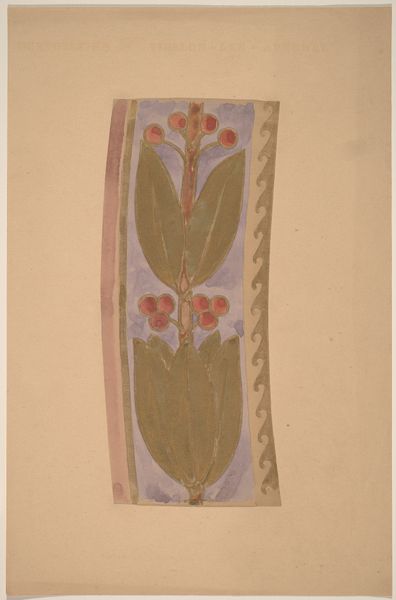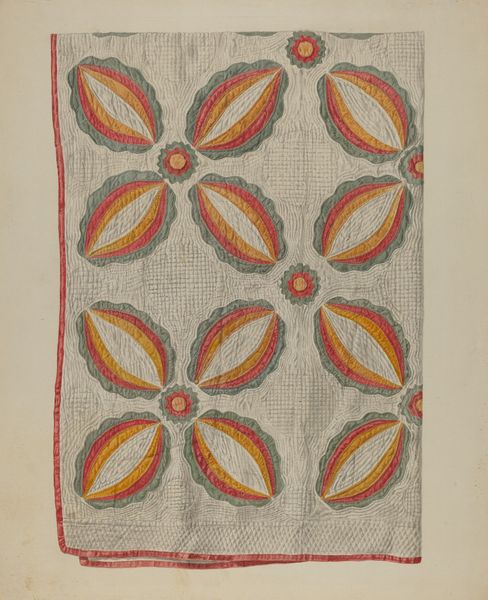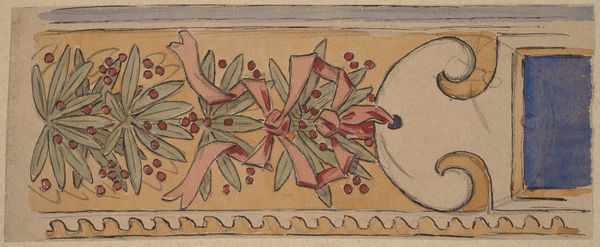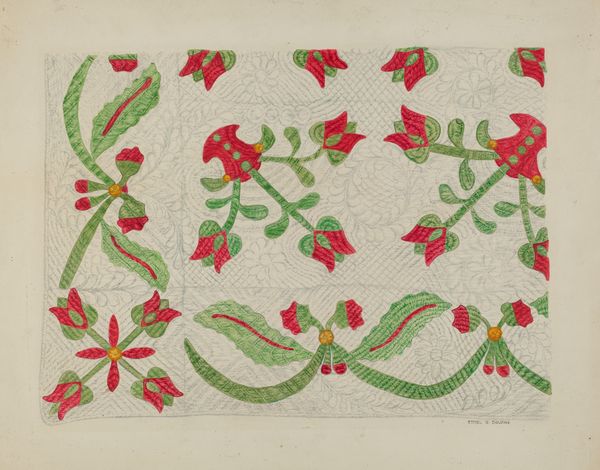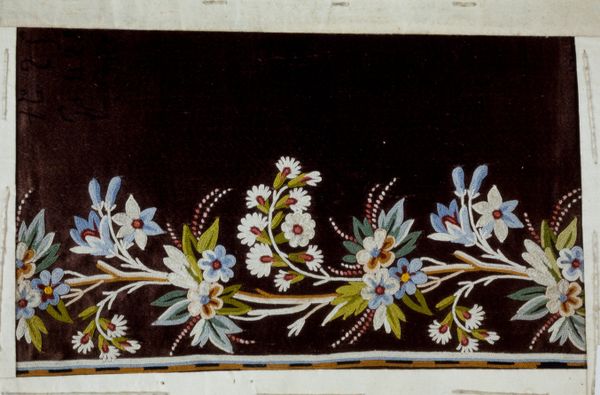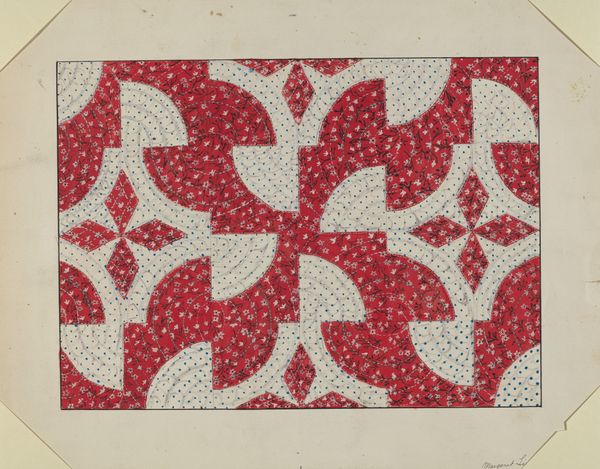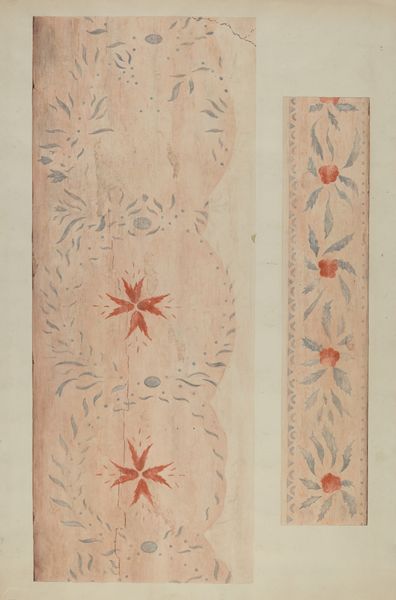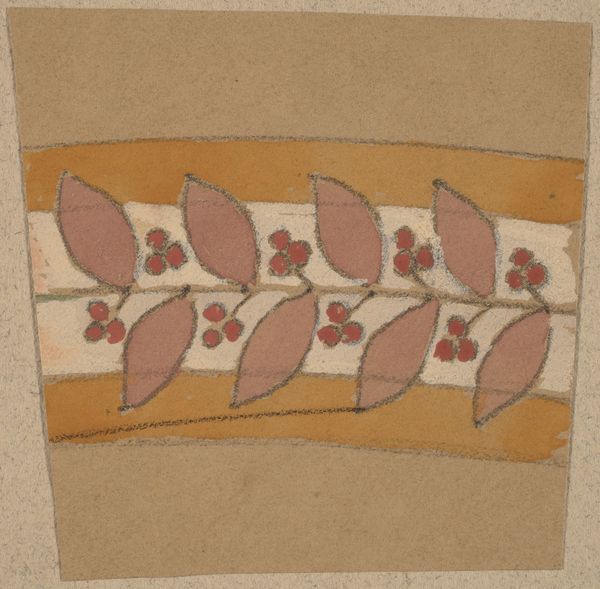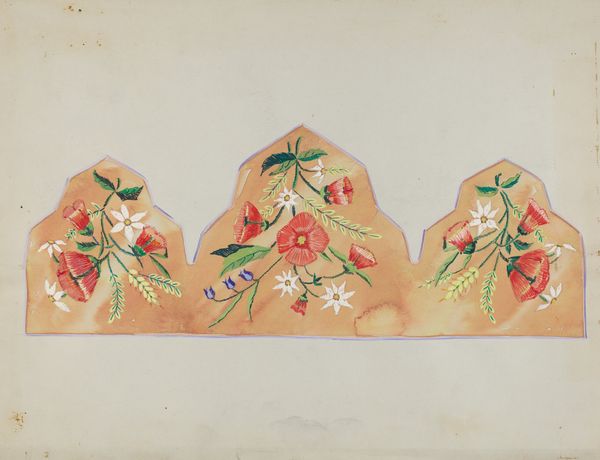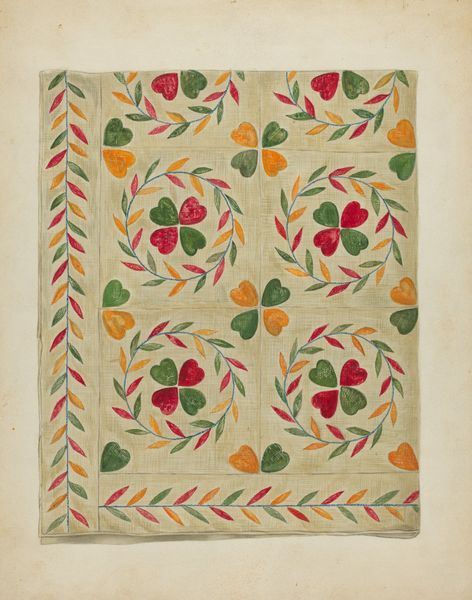
drawing, watercolor
#
drawing
#
arts-&-crafts-movement
#
watercolor
#
geometric
#
decorative-art
#
watercolor
Dimensions: sheet (irregular): 5.8 × 8.2 cm (2 5/16 × 3 1/4 in.) mount: 30.2 × 46.3 cm (11 7/8 × 18 1/4 in.)
Copyright: National Gallery of Art: CC0 1.0
Curator: This watercolor study created between 1890 and 1897 by Charles Sprague Pearce is entitled, "Study for a Border Design". Editor: It's calming. The muted earthy tones give it a very quiet, almost contemplative quality. It reminds me of botanical illustrations but with an intentional flattening of space. Curator: Note how Pearce employs horizontal bands that emphasize the two-dimensionality of the paper. There's a careful calibration of the space between the leaf and berry motifs, the pink band and the ochre borders—everything is working to establish the pictorial surface as an organized whole. Editor: Yet, understanding it as solely decorative ignores the broader social context of the Arts and Crafts movement of which Pearce was a part. His choice of natural, stylized forms reflects a desire to return to traditional craftsmanship in the face of industrialization. This artistic choice becomes a social statement. Curator: Precisely. The stylization transforms organic forms into units within a larger geometric structure. The color palette of earth tones evokes the pre-Raphaelite brotherhood’s fascination with a purified natural aesthetic. Notice how this work refuses any traditional modeling or attempts at perspectival depth, signaling a departure from academic naturalism and favoring surface decoration. Editor: What about this decorative impulse as more than aesthetic choice, but a gesture of inclusivity? Decorative art has historically been created and consumed by a wider segment of society. Curator: I see your point about broadening accessibility and the challenge to high art hierarchies. Pearce strategically integrates this aesthetic sensibility, inviting viewers to find beauty in everyday objects, potentially democratizing access to beauty through design. Editor: Exactly, it isn't just about appreciating beautiful things. It's about the underlying philosophy questioning the divisions within social stratifications, which for me elevates it beyond merely a formal study. Curator: Well said, our differing viewpoints allows us to examine how a relatively simple study can trigger profound contemplation about art, society, and visual experience. Editor: Indeed. These dialogues help unearth layers of understanding beyond the initial visual encounter.
Comments
No comments
Be the first to comment and join the conversation on the ultimate creative platform.

